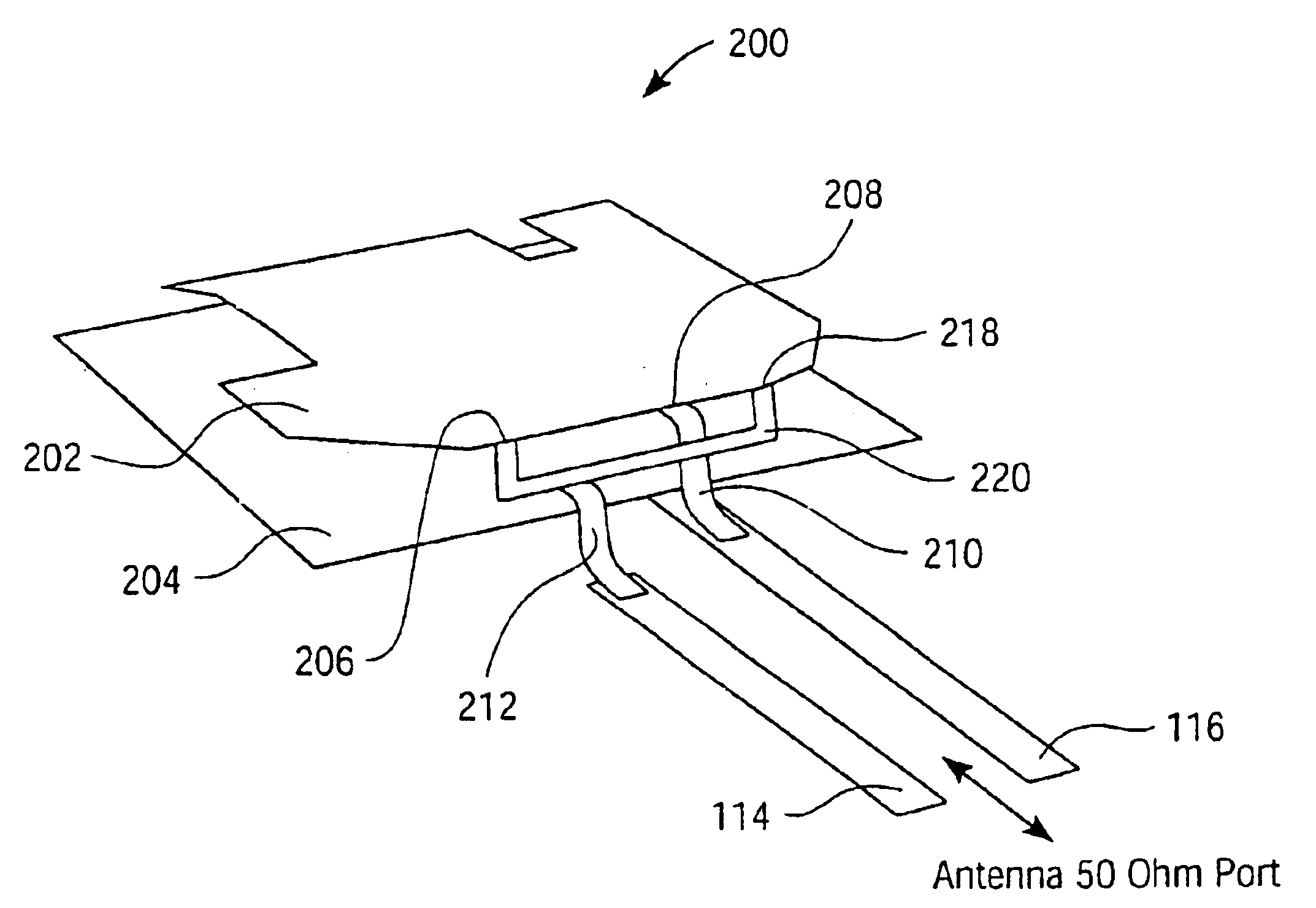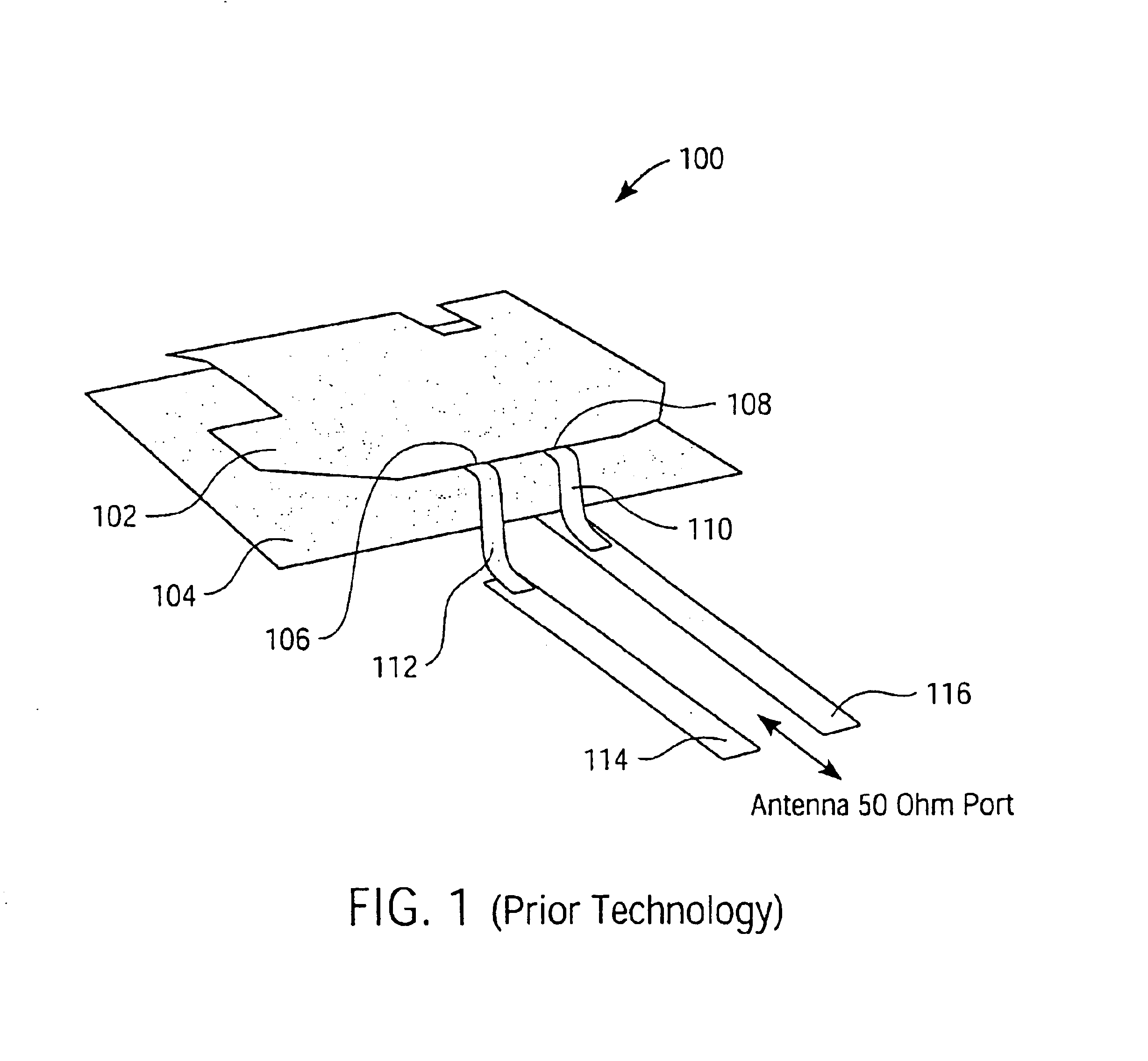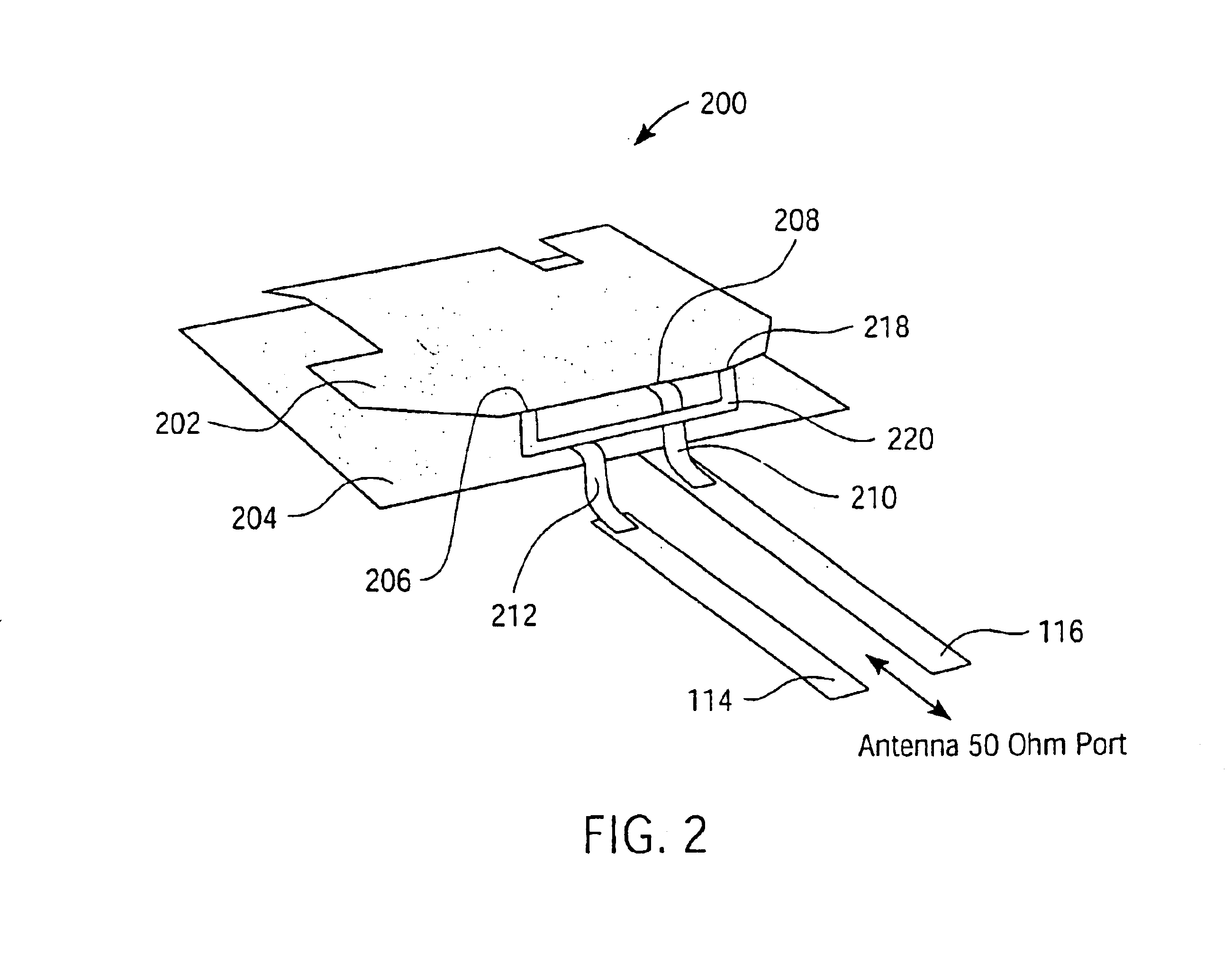Broadband planar inverted F antenna
a planar inverted antenna, broader bandwidth technology, applied in the direction of antennas, antenna details, electrical devices, etc., to achieve the effect of increasing the useable bandwidth of a pifa and increasing the volume (thickness) of the antenna
- Summary
- Abstract
- Description
- Claims
- Application Information
AI Technical Summary
Benefits of technology
Problems solved by technology
Method used
Image
Examples
Embodiment Construction
[0014]According to an exemplary embodiment of the invention, a mono-band PIFA structure includes a planar radiating element having a first area, and a ground plane having a second area that is substantially parallel to the radiating element first area. An electrically conductive first line is coupled to the radiating element at a first contact located at an edge on a side of the radiating element. The first line is also coupled to the ground plane. An electrically conductive second line is coupled to the radiating element at second and third contacts located along the same side as the first contact, but at different locations on the edge than the first contact. The first and second lines are adapted for a desired impedance, e.g., 50 ohms, at frequencies of operation of the PIFA.
[0015]In accordance to the present invention, connecting the second line to the radiating element at more than one contact location results in enhanced bandwidth for a give volume PIFA structure. The addition...
PUM
 Login to View More
Login to View More Abstract
Description
Claims
Application Information
 Login to View More
Login to View More - R&D
- Intellectual Property
- Life Sciences
- Materials
- Tech Scout
- Unparalleled Data Quality
- Higher Quality Content
- 60% Fewer Hallucinations
Browse by: Latest US Patents, China's latest patents, Technical Efficacy Thesaurus, Application Domain, Technology Topic, Popular Technical Reports.
© 2025 PatSnap. All rights reserved.Legal|Privacy policy|Modern Slavery Act Transparency Statement|Sitemap|About US| Contact US: help@patsnap.com



